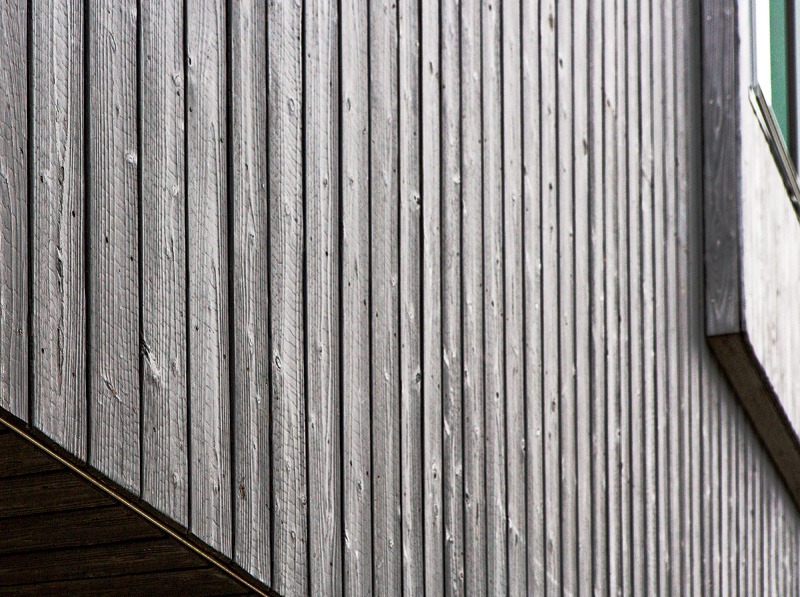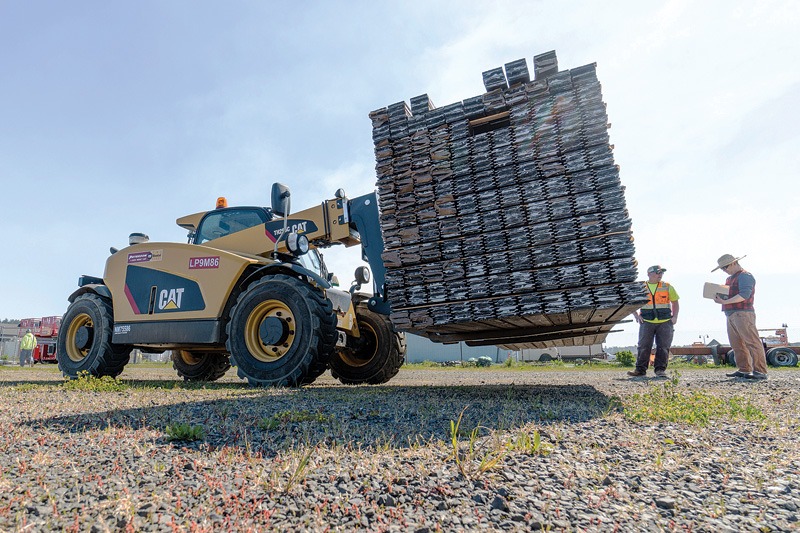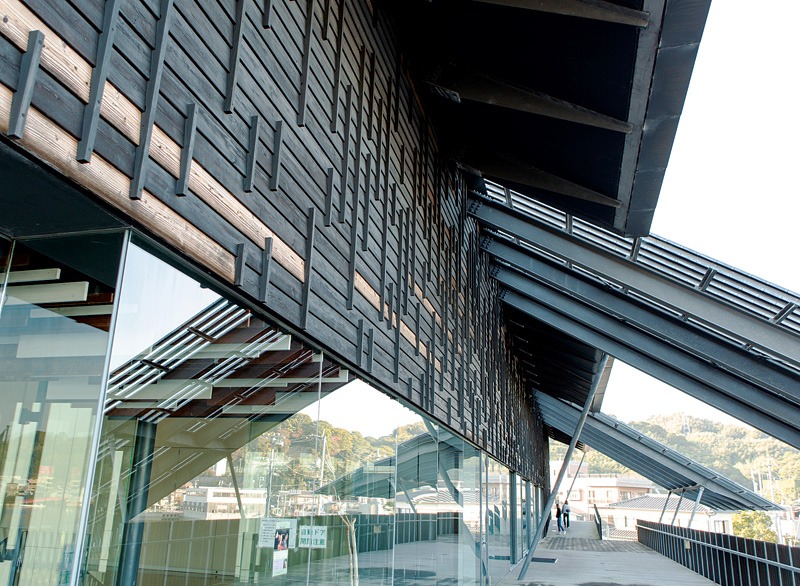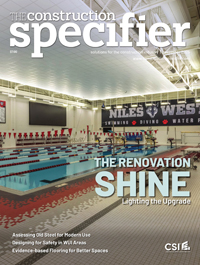Burn to last: Yakisugi’s architectural comeback

The use of wood as a building material has evolved with human innovation and civilization—from early shelters to complex architectural forms such as temples. As construction techniques have advanced, so have methods for preserving and enhancing wood’s natural properties. One such innovation is yakisugi, a traditional Japanese charred wood siding material. Historically only for thin plank wall and ceiling cladding, it is now steadily gaining traction in the global architectural community.
The history of yakisugi
One of the oldest known methods for manipulating and enhancing wood is fire treatment, a technique that dates back thousands of years, as evidenced by archeological discoveries all over the world. One of the most common examples is early humans using fire to harden wooden tools. Boatbuilders also adapted a technique using flames to bend wood planks to form the hulls of boats.
In Japan, charred wood, known as yakisugi, has been used as a siding material for several centuries. Traditional Japanese builders understood that this flame-treated wood had several longevity advantages over untreated wood. At the same time, it had a unique aesthetic beauty that changed over time as it weathered.
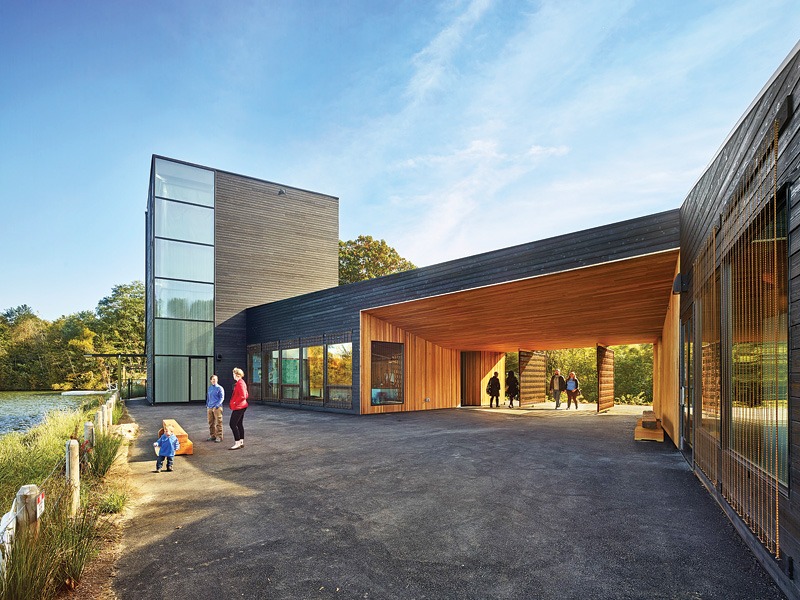
What is yakisugi?
Yakisugi refers to sugi wood that has been intensely burned. Yaki means burnt or charred and sugi is a species of indigenous Japanese cedar (Cryptomeria japonica).
Like all wood, sugi is primarily made up of the structural component lignin. It also contains hemicellulose carbohydrates—a material that serves as food for fungi and insects, as well as fuel for fire. The charring process used for manufacturing yakisugi burns off the hemicellulose, leaving behind only the lignin and a layer of soot. This transformation provides protection from fire, repels pests, and resists a wide range of weather damage, making it an ideal building material for wall, fence, and soffit cladding installations.
Sometimes referred to as shou sugi ban outside of Japan, yakisugi is becoming a popular choice for siding and paneling in modern commercial construction projects—and for good reason.
Durability
With proper manufacturing and installation, authentic yakisugi is estimated to last as long as 80 to 150 years without any maintenance. The charring process not only hardens the wood against pests and environmental forces, but it also protects it from UV damage. Yakisugi’s carbonized surface both absorbs and deflects harmful radiation, preventing it from penetrating and breaking down the lignin within the wood.
Yakisugi’s exceptional durability significantly enhances its sustainability profile, reducing the need for frequent replacements and minimizing material waste over time.

Sustainability
Wood is inherently a carbon-negative material. During growth, trees absorb CO2 from the atmosphere through photosynthesis and store it in their fibers. When the wood is harvested and used in construction, the carbon remains sequestered within the material, preventing it from re-entering the atmosphere.
Sustainably sourced timber is crucial to ensuring the environmental benefits of yakisugi. Leading manufacturers use selective thinning techniques rather than clear-cutting, maintaining forest health and promoting long-term resource regeneration. Suppliers who are dedicated to providing a sustainable alternative to carbon-intensive, engineered products also pursue a chain of custody audited sustainability certification. Environmental Product Declarations (EPDs) and Carbon Footprint (CFP) standards also verify their materials’ environmental impact.
Economic value
From a financial perspective, yakisugi offers significant savings. It costs less than many other high-end wood siding options and approximately half as much as traditional brick or stone facades. Yakisugi’s durability reduces the frequency of repairs and replacements versus untreated wood. With minimal maintenance requirements, such as the absence of regular refinishing or sealing, it can yield substantial long-term cost benefits for building owners and developers.
Aesthetics
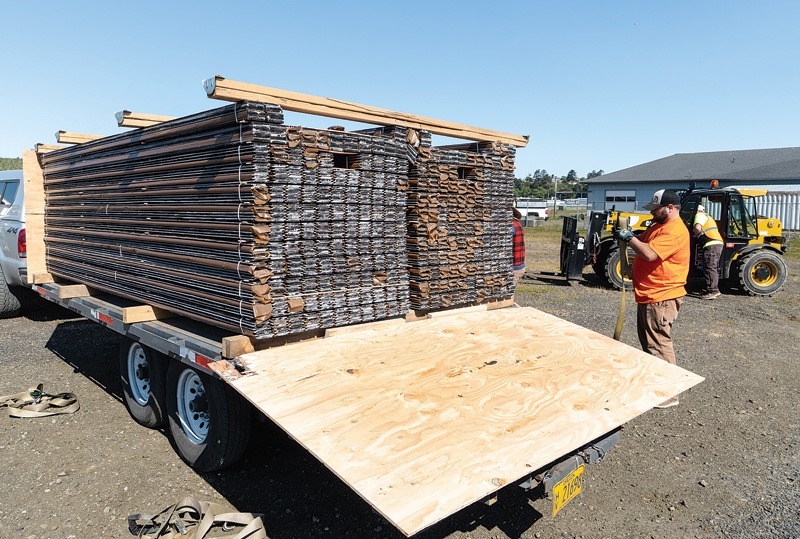
Beyond functional advantages, yakisugi is prized for its striking appearance. The precise milling and charring processes used to produce authentic yakisugi accentuate the wood’s natural grain, resulting in a distinctive textured finish. Depending on the desired look, yakisugi can be surface brushed to remove varying degrees of soot. When the soot layer is left intact, the surface has a near-black color with an alligator-skin-like texture. Removing most of the soot layer, on the other hand, reveals a unique striped grain pattern.
In addition to its textural variety, yakisugi can be customized with a range of stains, enhancing its aesthetic versatility while providing color consistency and longevity. When left unoiled, as is the tradition in Japan, yakisugi develops a beautiful patina over time, further enhancing its character as it weathers in response to environmental conditions.
Real-world applications of yakisugi
The myriad benefits of yakisugi—its durability, sustainability, economic value, and striking aesthetics—make it an attractive option for modern construction. These qualities are being harnessed in innovative projects that not only showcase the material’s potential but also highlight its adaptability in various architectural contexts. The following case studies illustrate the successful application of yakisugi in contemporary design, demonstrating how this age-old material is being reimagined in today’s built environment.
Gladys Valley Marine Studies Building
Oregon State University’s Gladys Valley Marine Studies Building is a 14-m (47 ft), 2,800-m2 (30,000-sf) academic and research facility located on the coast of Oregon in a tsunami inundation zone. Designed by Integrus Architecture to withstand a 9.5 magnitude earthquake, it is twice its height below ground and incorporates state-of-the-art architectural and engineering techniques to meet unprecedented resilience goals. It also serves as one of the first vertical evacuation tsunami sites in the U.S.
Yakisugi was chosen for the exterior cladding due to its resilience to the region’s wet and windy coastal climate. The majority of the cladding consists of yakisugi that has been brushed once to remove some of the soot layer and finished with the manufacturer’s proprietary acrylic black stain for maximum color longevity. As an accent, the design also incorporates yakisugi that has been brushed twice to remove most of the soot layer and then finished with a silver stain. This provides tonal and textural contrast, creating a visually striking exterior.
The primary driver in specifying yakisugi was the Tohoku earthquake and tsunami in 2011. At the time of design, debris from the disaster was washing up on Oregon’s beaches. As the project site lies in a tsunami zone, the designers chose the traditional Japanese material—known for its resiliency—as both a practical and symbolic response, honoring nature and the region’s marine heritage.

Kure City Civic Center
Designed by Japanese firm Kengo Kuma and Associates, the Kure City Civic Center is an example of modern architecture deeply rooted in Japanese heritage. Situated on the coast of Japan’s Seto Inland Sea, this public facility serves as a branch of city hall, a community center, and a library.
The exterior walls are clad in yakisugi, which was brushed once and prefinished with a black stain. The yakisugi boards were installed horizontally in a shiplap pattern, with each bottom edge set over the top of the board below to create subtle depth and shadowing. Thin, vertical cross-pieces were added in a random rhythm to mimic the waves of the nearby sea, connecting the structure to the region’s natural beauty.
Beyond its visual appeal, yakisugi was an ideal material choice for this coastal location due to its natural resistance to rot, salt, and humidity. It is also most commonly used in the Kure region, making it a vernacular material choice.
Discovery Center
Located in Philadelphia’s Strawberry Mansion neighborhood, the Discovery Center is a unique urban sanctuary that serves as both a bird habitat and leadership development facility. A collaboration between the Audubon Society of Pennsylvania, Outward Bound Philadelphia, and the local community, the center, designed by DIGSAU, hosts diverse programming aimed at connecting city residents with nature. The project site surrounds a decommissioned 14-ha (37-acre) reservoir, helping to revitalize an integral part of the city’s 19th-century water infrastructure for public use.
The design of the Discovery Center integrates yakisugi for its main facade and site wall, spanning 150 m (500 ft). This charred wood cladding was chosen for its ability to balance natural beauty with urban durability. In addition to its striking aesthetic appeal, the yakisugi, which was sourced from sustainably managed timberland, also aligns with the center’s environmental mission. This design choice underscores the center’s commitment to nature and contributes to the long-term preservation and accessibility of this important urban green space.

Considerations when choosing yakisugi
When sourcing yakisugi, it is essential to thoroughly research the manufacturer to ensure the authenticity and quality of the product. Authentic yakisugi can only be crafted from native Japanese sugi (Cryptomeria japonica). This species possesses high mineral content and low resin levels, making it naturally rot-resistant and exceptionally well-suited to a deep-burning process.
Consider the manufacturer’s processes, including their approach to heat treatment and millwork. Some treatments are superficial, aiming primarily at achieving an aesthetic char layer. While this method may create an appealing look initially, it lacks the structural benefits of authentic yakisugi’s deep heat treatment, which case-hardens the wood for extra durability. Additionally, expertly milled yakisugi has increased weather resistance, particularly valuable for exterior applications.
Lastly, evaluate the coating options, which dictate how the yakisugi aesthetically ages. For those seeking a living finish, unoiled yakisugi will naturally patina over time, gradually evolving in color and tone depending on environmental conditions. Alternatively, coatings offer a broad range of colors and transparencies, allowing for diverse aesthetic outcomes—from a subtly evolving, organic patina to an architectural-grade, colorfast finish.
Tips for proper installation
Maximizing the benefits of yakisugi requires proper installation. Prior to installation, yakisugi boards should be acclimated at the site to adjust to local humidity and temperature conditions. To prevent warping or other moisture-related issues, the wood should be stored out of direct sunlight and rain, but with ample ventilation.
Once acclimated, exterior yakisugi should be installed as part of a rainscreen assembly. A rainscreen is a system designed to create an air gap between the siding and the underlying weather-resistant barrier (WRB). This ventilation prevents moisture build-up, which can lead to fungal growth and long-term damage to both the siding and the building’s structure.
For best results, use a solid wood or engineered furring screen wall assembly with a furring layout of 406-mm (16-in.) on center (o.c.) and two-headed face fasteners per row. While the upfront cost of installing a rainscreen may be higher, it is a small long-term investment compared to the potential costs of remediation and health risks from mold exposure.
Author
William “Bill” Beleck is the president of Nakamoto Forestry North America. Raised in Texas and Oregon, he graduated from the University of Oregon and Keio University in Tokyo. As a fourth-generation carpenter, Beleck developed a strong passion for woodcraft, which deepened during his studies in Japan. There, he gained firsthand experience of traditional Japanese woodworking. He spent several years working in a family remodeling business before managing machinery distribution for a Japanese multinational corporation. After discovering the authentic Japanese yakisugi. Beleck partnered with Nakamoto Zourin, one of the world’s largest yakisugi manufacturers, to launch Nakamoto Forestry North America in 2016.
Key Takeaways
Yakisugi, a traditional Japanese charred wood material, has enhanced durability, sustainability, and aesthetics compared to unburned wood. By burning away hemicellulose, it resists fire, pests, and weathering while reducing maintenance costs. Increasingly used in modern architecture, it offers longevity, eco-benefits, and striking visual appeal, making it a sustainable alternative to conventional cladding materials.


